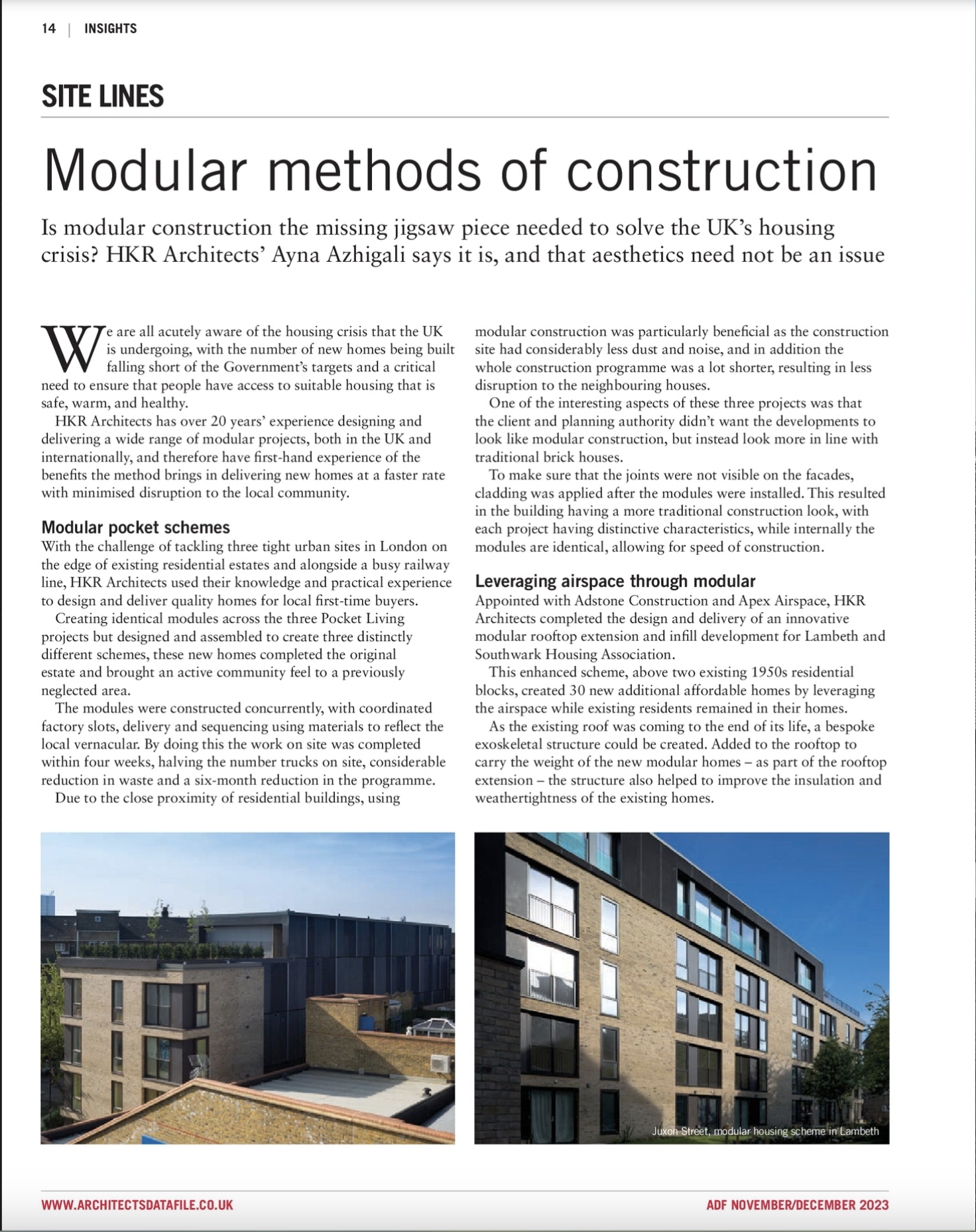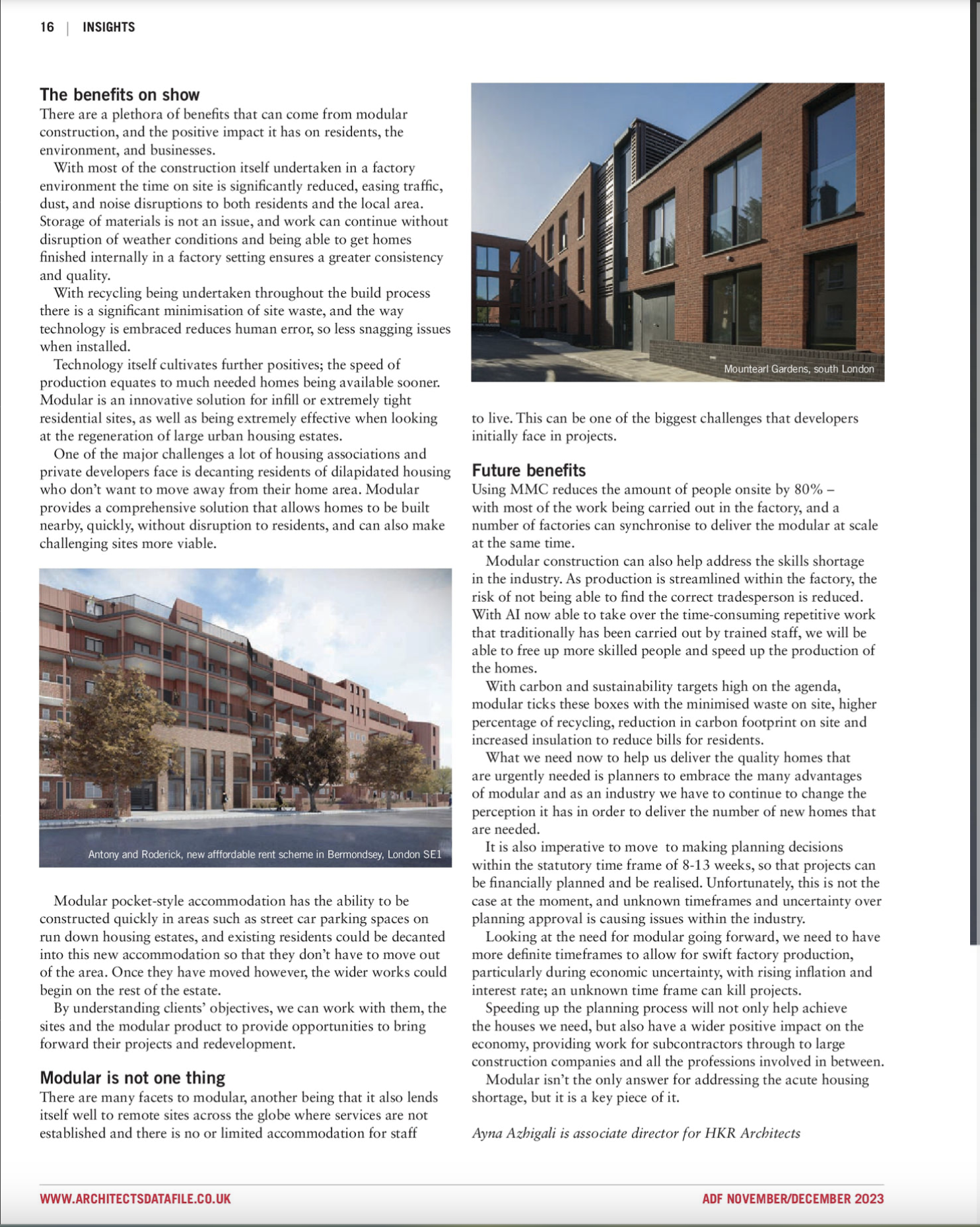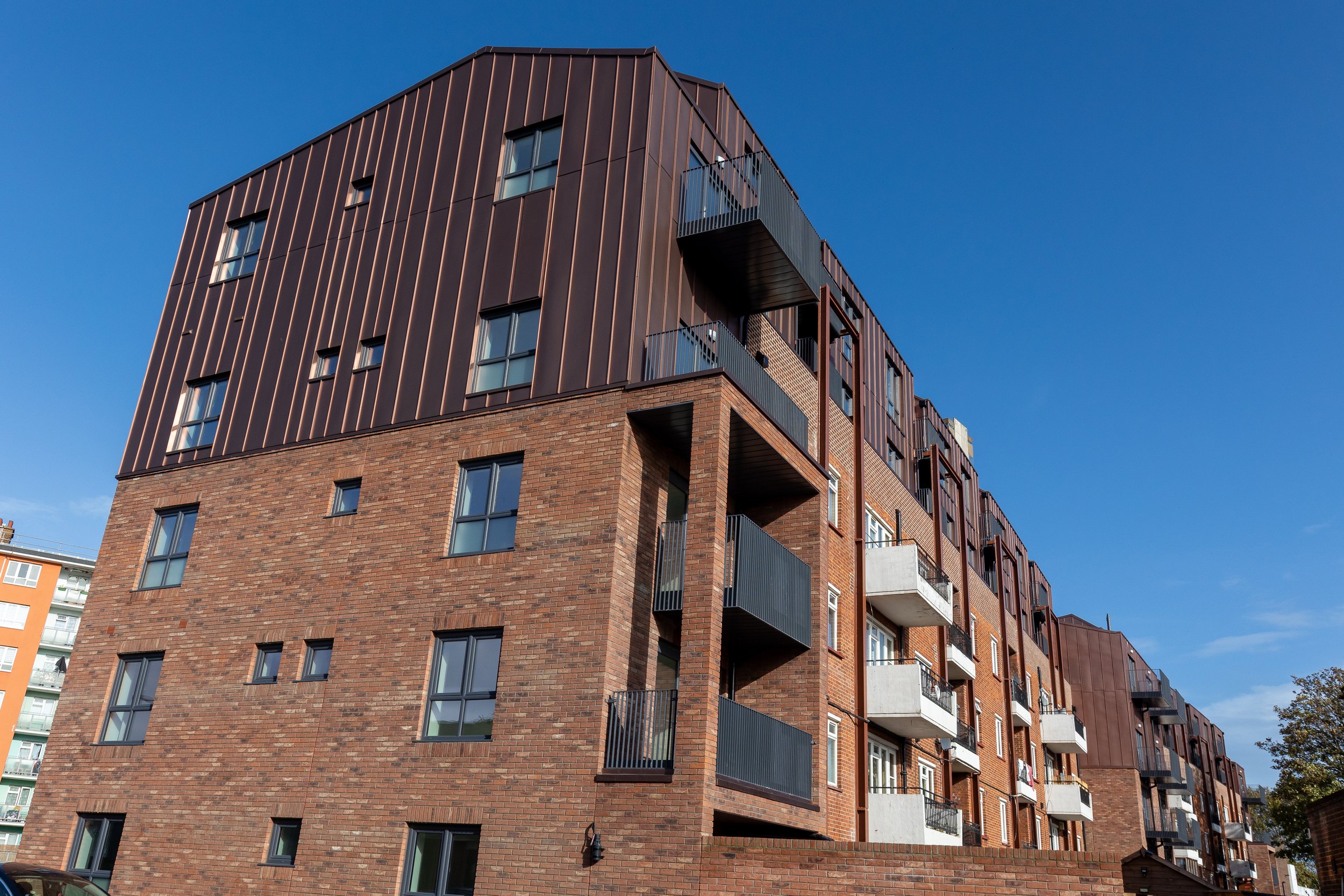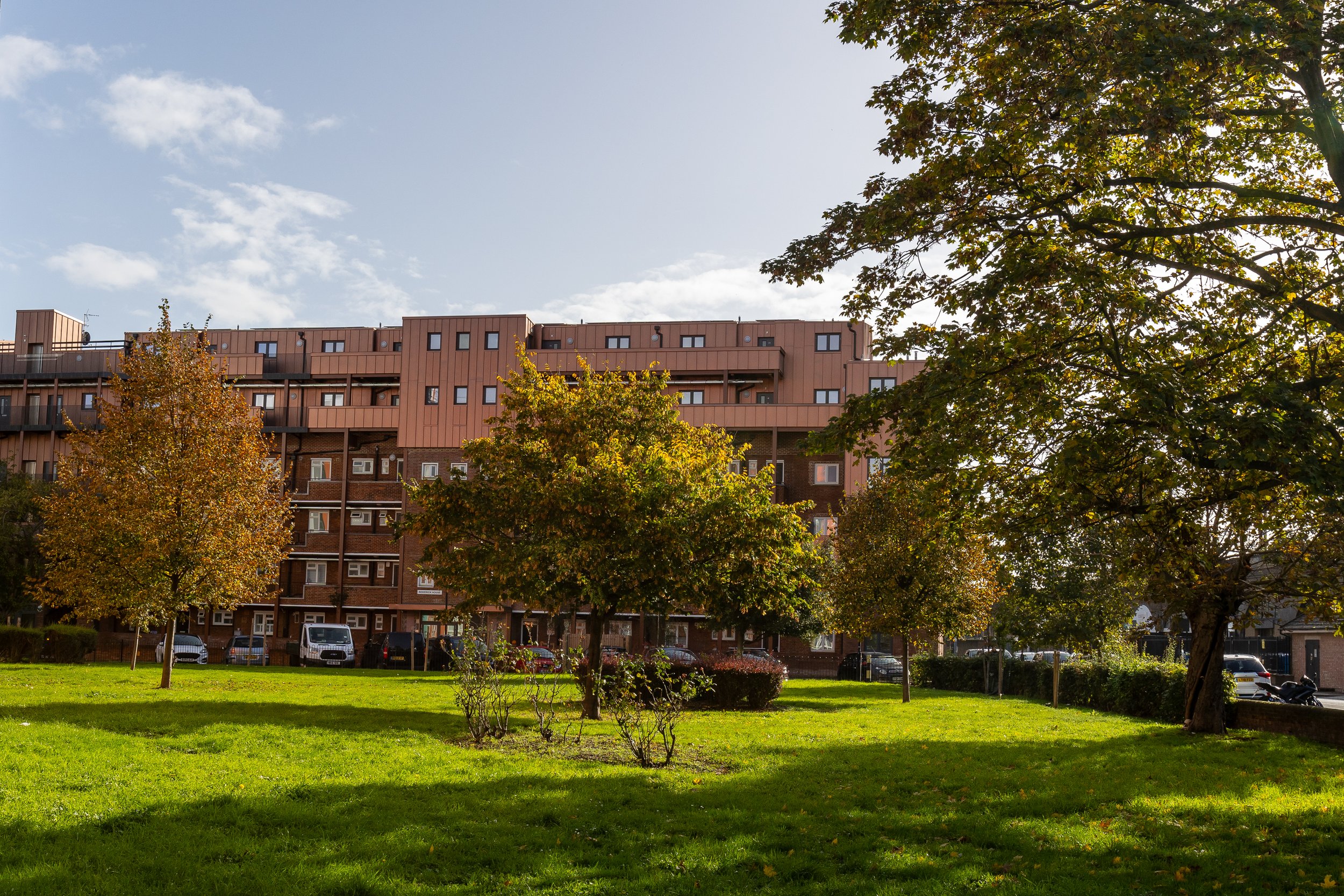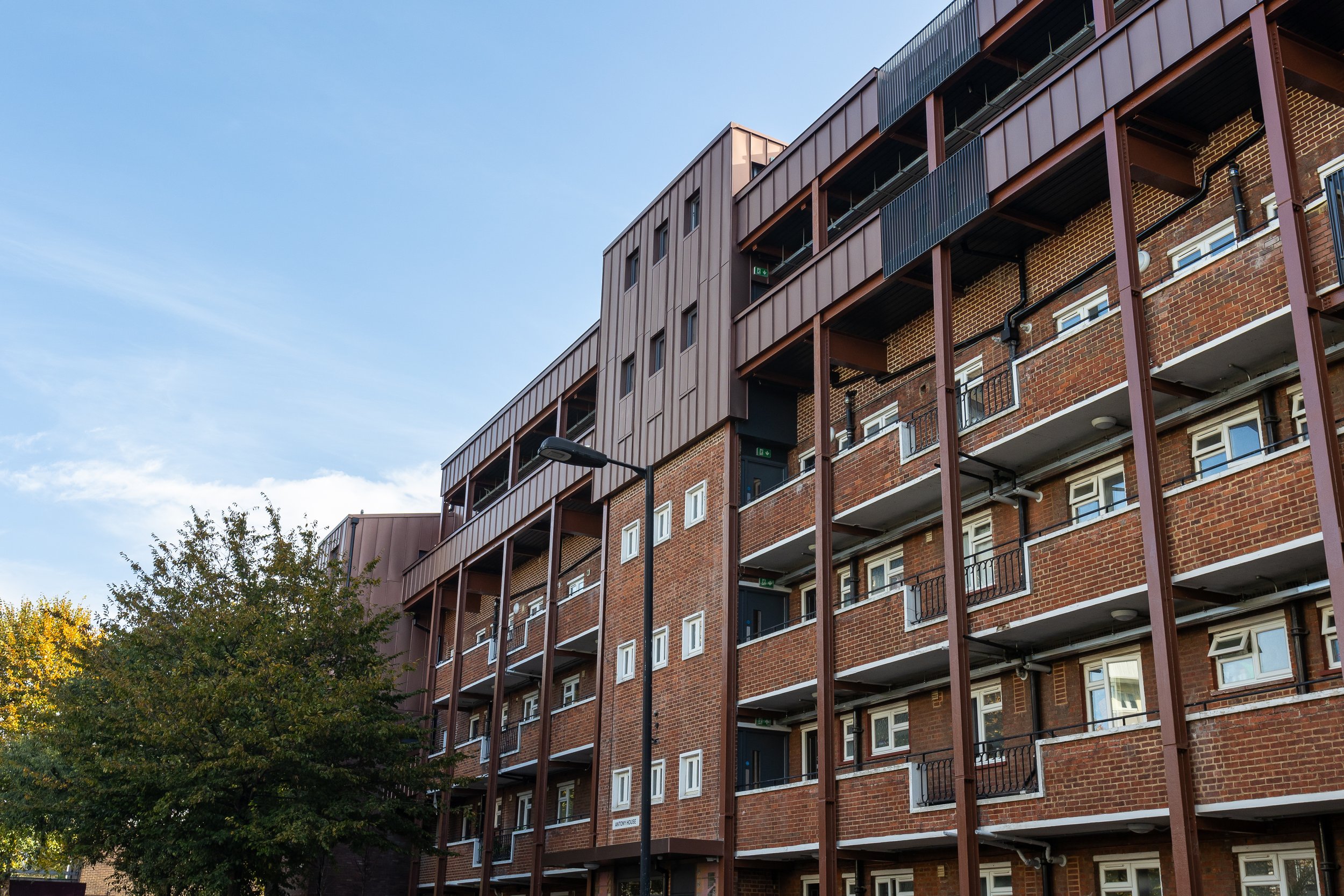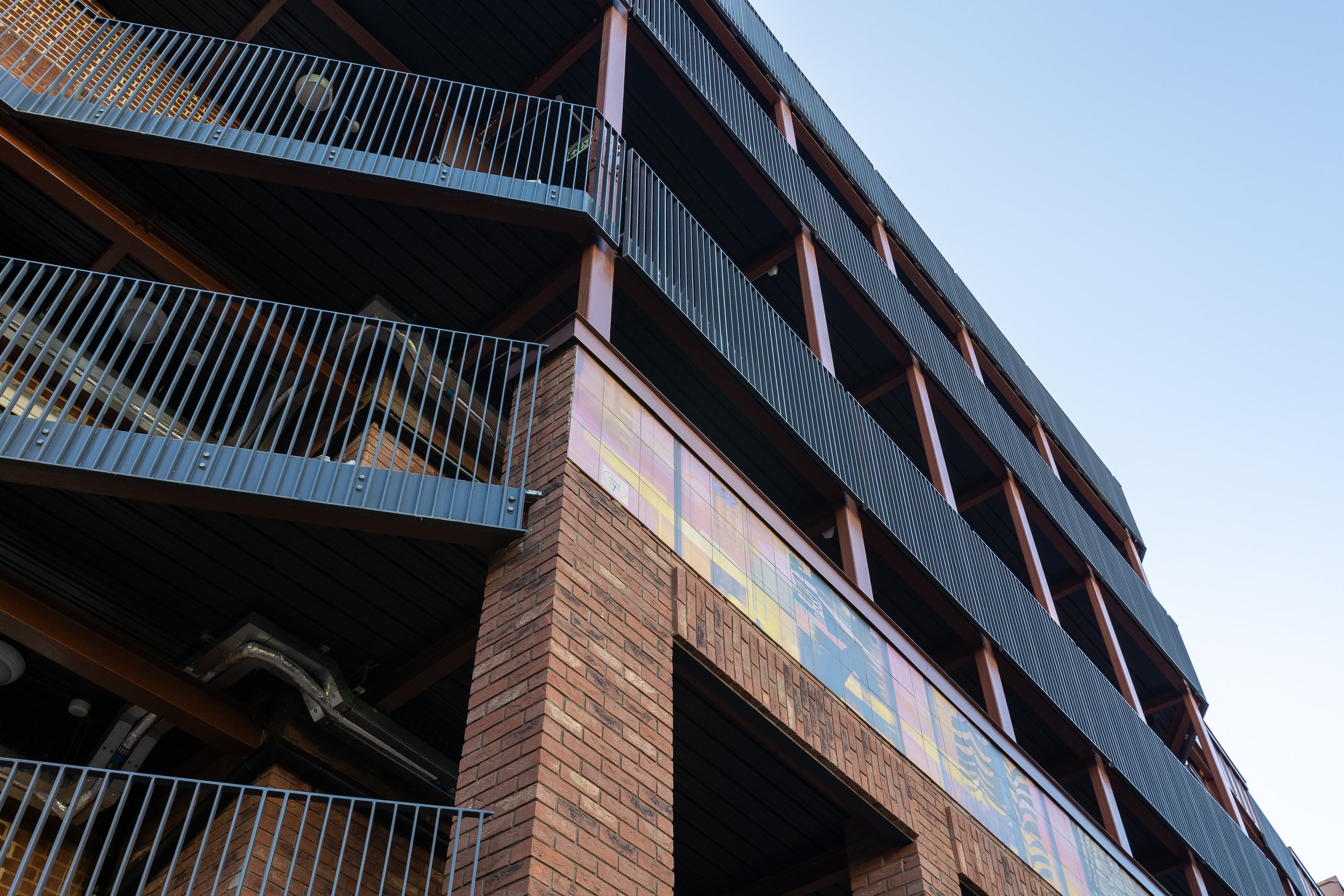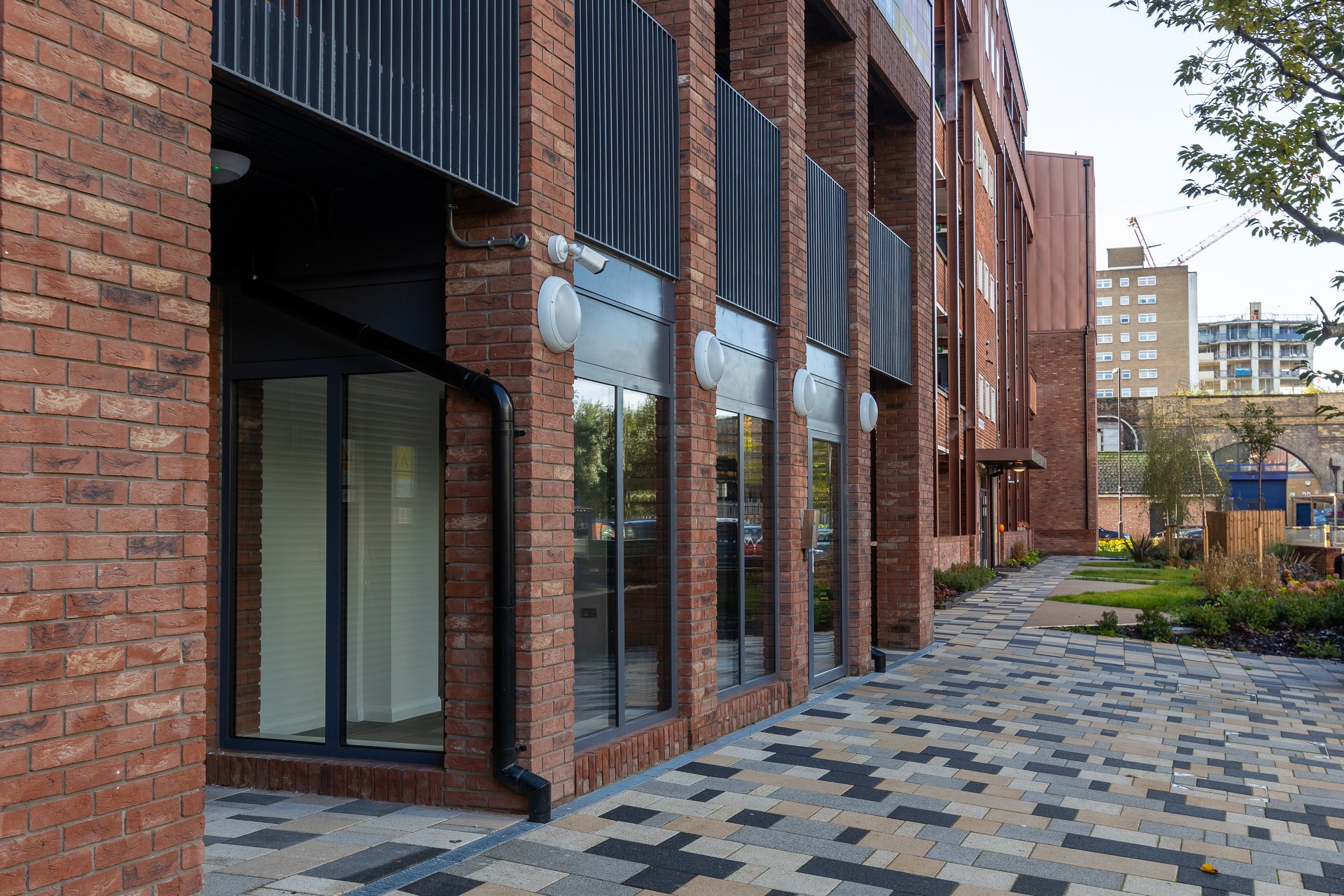Is modular construction the major jigsaw piece in the housing crisis?
The November/December of trade journal, Architects Datafile, features an article by our Associate Director Ayna Azhigali, discussing MMC and how it is one of the major missing piece in the housing crisis and how aesthetics need not be an issue.
We are all acutely aware of the housing crisis that is taking place in the UK, with the number of new homes being built falling short of the Government’s targets and a critical need to ensure that people have access to suitable housing that is safe, warm, and healthy.
As a practice we have over 20 years’ experience designing and delivering a wide range of modular projects, both in the UK and internationally and therefore have first-hand experience of the benefits this brings in delivering new homes at a faster rate with less disruption to the local community.
Examples of success:
Modular Pocket Schemes
With the challenge of three tight urban sites in London on the edge of an existing residential estate and alongside a busy railway line we used our wealth of knowledge and practical experience to design and deliver quality homes for local first-time buyers.
Creating identical modules across the three Pocket Living projects but designed and assembled to create three distinctly different schemes, these new homes completed the original estate and brought an active community feel to a previously neglected area.
The modules were constructed concurrently, with coordinated factory slots, delivery and sequencing using materials to reflect the local vernacular. By doing this we were able to complete the work on site within four weeks, resulting in half less trucks on site, considerable reduction in waste and a six-month reduction in the programme.
Due to the close proximity of residential buildings, using modular construction was particularly beneficial as the construction site had considerably less dust and noise and in addition the whole construction programme was a lot shorter, resulting in less disruption to the neighbouring houses.
One of the interesting aspects of these three projects was that the client and planning authority didn’t want the developments to look like modular construction, but instead look more in line with traditional brick houses.
To make sure that the modular joints were not visible on the facades, we had to apply cladding after the modular was installed. This resulted in the building have a more traditional construction look, with each project having distinctive characteristics, while internally the modules are the same, allowing for speed of construction.
Leverage airspace through modular - Antony and Roderick House, Bermondsey, South-East London
Appointed with Adstone Construction and Apex Airspace for our expertise and vision we completed the design and detailed delivery of an innovative modular rooftop extension and infill development for Lambeth and Southwark Housing Association.
This enhanced scheme, on two existing 1950s residential blocks, created 30 new additional affordable homes by leveraging the airspace while existing residents remained in their homes.
As the existing roof was coming to the end of its life this allowed us to create a bespoke exoskeletal structure which was added to the rooftop to carry the weight of the new modular homes, as part of the rooftop extension, also helping to improve the insulation and weathertightness of existing homes.
Let’s look at the benefits.
I am passionate about the plethora of benefits that come from this form of construction and the positive impact it has on residents, the environment, and businesses.
With most of the construction undertaken in a factory environment the time on site is significantly reduced, easing traffic, dust, and noise disruptions to both residents and the local area. Storage of materials is not an issue, and work can continue without disruption of weather conditions and being able to get homes finished internally in a factory setting ensures a greater consistency and quality.
With recycling being undertaken throughout the build process there is a significant minimisation of site waste, and the way technology is embraced reduces human error, so less snagging issues when installed.
Technology itself cultivates further positives; the speed of production equates to much needed homes being available much sooner.
I personally think that modular is an innovative solution for infill or extremely tight residential sites as well as being extremely effective when looking at the regeneration of large urban housing estates.
One of the major challenges a lot of housing associations and private developers face is decanting residents of dilapidated housing who don’t want to move away from the area where there is home. Modular provides a comprehensive solution that allows homes to be built nearby, quickly, without disruption to residents and can also make challenging sites more viable.
Using the modular pocket style scheme accommodation could be constructed quickly in areas such as on street car parking spaces on run down housing estates and existing residents could be decanted to this new accommodation so that they don't have to move out of the area. Once they have moved, the wider works could begin on the estate.
By understanding clients’ objectives, we can work with them, the sites and the modular product to provide opportunities bring forward their projects and redevelopment.
There are many facets to modular, another being that it also lends itself well to remote sites across the globe where services are not established and there is no or limited acommodation for staff to live, potentially one of the biggest challenges that developers initially face.
Using MMC reduces the amount of people on site by 80% - with most of the work being carried out in the factory, and a number of factories can synchronise to deliver the modular at scale at the same time.
I also believe modular construction can help the skills shortage in the industry. As production is streamlined within the factory the risk of not being able to find the correct tradesperson is reduced. With AI now able to take over the time-consuming repetitive work that traditionally has been carried out by trained staff, we will be able to free up more skilled people and speed up the production of the homes.
With carbon and sustainability targets high on the agenda, modular ticks these boxes with the minimised waste on site, higher percentage of recycling, reduction in carbon footprint on site and increased insulation to reduce bills for residents.
What we need now to help us deliver the quality homes that are urgently needed is planners to embrace the many advantages of modular and as an industry we have to continue to change the perception it has in order to deliver the number of new homes that are needed.
It is also imperative that planning decisions are made within the statutory time frame of 8-13 weeks without delay, so that projects can be financially planned and be realised. Unfortunately, this is not the case at the moment and unknown timeframes and uncertainty over planning approval is causing issues within the industry.
Looking at modular, we need to have more definite timeframes to allow for swift factory production, particularly during economic uncertainty, with rising inflation and interest rates, an unknown time frame can kill projects.
Speeding up the planning process will not only help achieve the houses we need but also have a wider positive impact on the economy, providing work for subcontractors through to large construction companies and all the professions involved in between.
Modular isn’t the only answer for the housing shortage, but it is key piece of it.

